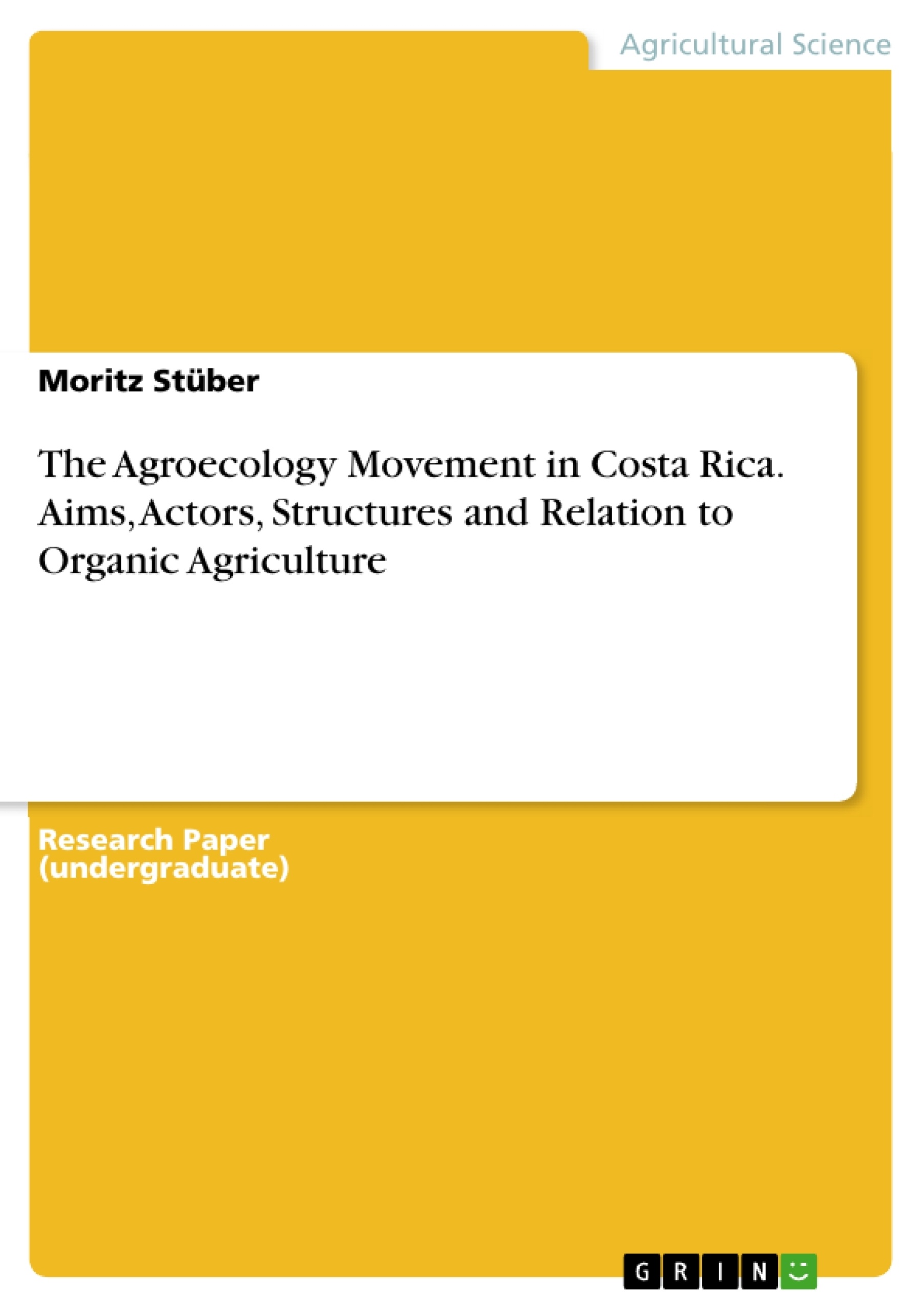Agroecology, just like Organic Agriculture in Europe, belongs to the huge amount of approaches, which aim to perform agriculture in a more sustainable way. The Agroecology movement, as it is named by the famous agronomist and agroecological expert Altieri, has its origins in Latin America. The approach of Agroecology is integrating ecological measures and traditional knowledge into the farming system, aiming to perform agriculture in a more sustainable and also to attain food sovereignty and food security. Regarding to the sheer size of Latin America, several regions are subdivided by having their own sub-movement. By focussing on Costa Rica as part of Central America, this case study aims to give a proper understanding how the Central American movement works. The sub-movement in Central America is called the farmer-to-farmer movement. Here, knowledge and technology are passed on between several farmers within one region, seeing themselves as peer. Trainers, so called promotors are installed, are doing the preparatory work, as they are the link between knowledge and the soon-to-be Agroecological farmers. Workshops are held, and a pre-structuring is given, to enable and simplify the application of Agroecology. CAC can be rather seen as a key methodology, having its origins in Central America. For the Agroecological farmers, the CAC approach is not to be categorised nowhere near Agroecology. CAC is just a method, whereas the farmers are practicing Agroecology as a philosophy. Their philosophy is including culture, traditional practices and community living, together with exchange and political advocacy. Public instruments and structures are not given solely for Agroecology, but for several sustainable agriculture approaches together. A law on Organic Agriculture was implemented in 2007. Organic Agriculture should not be equated to Agroecology. NGOs and public bodies, that are working on the field of sustainable agricultural approaches, are aiming to unite all different systems, e.g. Agroecology and Organic Agriculture. NGOs are aiming mostly for political power, coming with one big movement, while the government is rather interested in the economic aspects of a huge sustainable production. To the farmers, Organic Agriculture was introduced to be a way to gain price premiums, by just adding seals to their product.
Table of content
1. Introduction [along with Tainná Viana]
2. Methodology
3. General information about Costa Rica
4. Agroecology
4.1. Farmer-to-farmer movement
4.2. Agroecology in Costa Rica
4.2.1. The farmers’ point of view
4.2.2. The governmental organisations’ point of view
4.2.3. The non-governmental organisations’ point of view
4.2.4. Examples
5. Organic Agriculture in Costa Rica
5.1. History
5.2. Organic Agriculture in Costa Rica
6. Discussion
7. Conclusion & outlook
8. References
9. Annex
- Quote paper
- Moritz Stüber (Author), 2018, The Agroecology Movement in Costa Rica. Aims, Actors, Structures and Relation to Organic Agriculture, Munich, GRIN Verlag, https://www.grin.com/document/444909
-

-

-

-
Upload your own papers! Earn money and win an iPhone X. -

-
Upload your own papers! Earn money and win an iPhone X. -

-
Upload your own papers! Earn money and win an iPhone X. -

-
Upload your own papers! Earn money and win an iPhone X. -

-
Upload your own papers! Earn money and win an iPhone X. -

-
Upload your own papers! Earn money and win an iPhone X. -

-
Upload your own papers! Earn money and win an iPhone X. -

-
Upload your own papers! Earn money and win an iPhone X. -

-
Upload your own papers! Earn money and win an iPhone X. -

-
Upload your own papers! Earn money and win an iPhone X.

